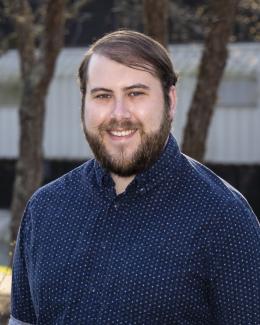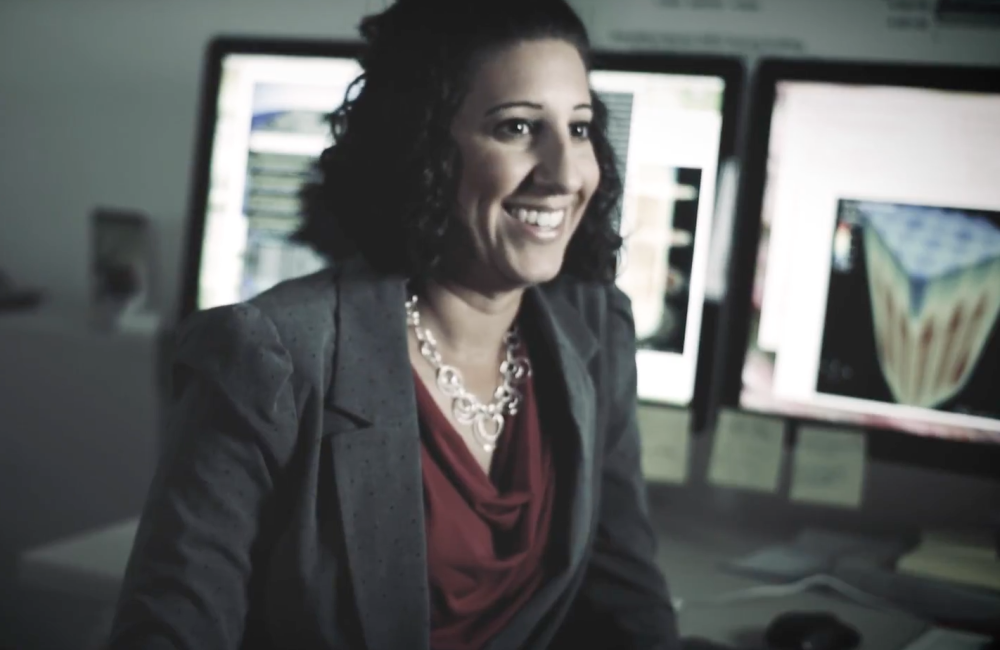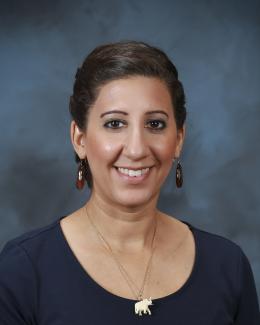August 7, 2017 – Tara Pandya’s interest in nuclear engineering began with a literal flash of inspiration.
Pandya originally aspired to become a musician or a music teacher, but grew to love math and physics the more she learned about them. When it came time for college, she wanted to find a program in her home state of Texas where she could combine the two fields. Texas A&M offered a nuclear engineering program that interested her, and it was during a tour of the school’s TRIGA research reactor that she saw the fateful demonstration of a “pulse” that would cement her fascination with the subject.
“It basically means that they can shoot a lot more neutrons and it glows blue, and I was like, ‘Whoa, that’s the coolest thing ever!’” Pandya said. “When they explained the science behind what was going on, I said, ‘Yes, I want to do that.’”
She enrolled in Texas A&M for both her undergraduate and graduate education, earning her doctorate in nuclear engineering in 2012. She joined the Department of Energy’s Oak Ridge National Laboratory later that year as a postdoctoral researcher and transitioned in 2014 to a research staff position in the Radiation Transport group.
Now, Pandya develops Monte Carlo and Deterministic radiation transport codes as a computational nuclear engineer in the lab’s Reactor and Nuclear Systems Division.
When traditional methods fail to produce high-quality results, Pandya works to find new approaches or novel combinations of established methods to produce better answers faster and with greater confidence.
“I work pretty methodically through things. I think that’s how the music and the math play in, because they’re very related,” Pandya said. “I can say, ‘I see a problem, I need to get to this outcome,’ and I can methodically work through it and see how to get to the answer.”
She was originally drawn to computational, rather than experimental, nuclear engineering, she said, because it integrates the puzzle-solving nature of physics with the power of cutting-edge computer science.
“How can we take that equation and program it so that a computer can understand what that means and be able to solve it mathematically?” Pandya said. “I think that’s where the interesting part comes in, because you’re basically taking math language and turning it into machine language. Math is kind of the universal language than governs everything.”
A look into the nuclear world
Pandya’s work has a wide range of applications, from reactor design and power generation to national security. She was named one of the Knoxville Business Journal’s “40 Under 40” in 2016 and won an R&D 100 Award for her work on the Virtual Environment for Reactor Applications technology with the Consortium for Advanced Simulation of Light Water Reactors.
Simulation tools like VERA can generate answers for a variety of material, power and safety issues and provide vital insights into the operation of new reactors, such as the Tennessee Valley Authority’s Watts Bar Unit Two power plant.
“Since we are simulating a lot of things that haven’t been built yet or are in the building process, a lot of people can’t grasp what we’re doing, so we need a way to be able to show what we’re simulating to someone who really has no idea,” Pandya said. “It is kind of empowering because you could potentially simulate whatever you want if you sit down and just think about the physics you want to capture.
“Even though I fell in love with something I couldn’t see and touch, I could still make visualizations that eventually I’ll be able to see, hopefully, if they come to fruition and actually get built.”
A new computing paradigm
Pandya’s next big challenge is to prepare for the rollout of the Summit supercomputer and the formidable technical hurdles of the Exascale Computing Project.
ORNL’s nuclear engineers normally run their code on the hybrid CPU and GPU architecture of the Titan supercomputer. Summit and next-generation computers, however, will have mostly GPU architectures, which cannot run high-fidelity nuclear codes. As a result, Pandya and other computational nuclear engineers must fundamentally change their algorithms to take advantage of future computing resources.
“We have to adapt all of our codes, not just here but in the whole industry, to be able to run on these new machines,” she said. “It’s a whole new way of thinking about how to model our physics and solve this math problem on a new type of architecture because there’s all kinds of different limitations.”
Pandya’s biggest influences have been her advisors and team leaders who developed novel, long-standing methods of their own and encouraged her to do the same by bridging different areas of cutting-edge science and forging new connections.
“I think I’d be the proudest of being able to develop some code that’s basically still in use when I retire or after, which is hard to do nowadays,” Pandya said. “Something useful to people, something that was robust enough to simulate the entire lifetime of a system.”
In an age when new nuclear systems can take decades to design and construct, developing powerful, useful simulations is a top priority, especially as the nation and the world look for modern solutions to future energy demands.
“We have to do something. We know that we’re not going to be able to sustain our power usage with the way things are done right now,” Pandya said. “We have to build something totally different. In order to do that, we’ve got to solve the challenging problems.”
UT-Battelle manages ORNL for the DOE's Office of Science. The Office of Science is the single largest supporter of basic research in the physical sciences in the United States, and is working to address some of the most pressing challenges of our time. For more information, please visit http://energy.gov/science/.




